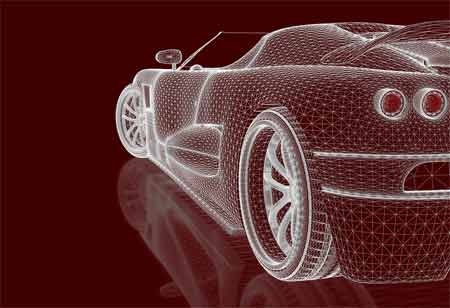THANK YOU FOR SUBSCRIBING
THANK YOU FOR SUBSCRIBING
Be first to read the latest tech news, Industry Leader's Insights, and CIO interviews of medium and large enterprises exclusively from Auto Tech Outlook

By
Auto Tech Outlook | Tuesday, July 04, 2023
Stay ahead of the industry with exclusive feature stories on the top companies, expert insights and the latest news delivered straight to your inbox. Subscribe today.
Integrating functional safety and security features in automotive processors is vital to protect vehicles from potential attacks and maintain consumer trust. The increasing complexity of automotive systems and rising security risks call for a holistic approach to Security and safety.
FREMONT, CA: The automotive industry has witnessed significant transformations in recent years, introducing advanced features to enhance safety, performance, and driving comfort. These advancements have increased onboard electronic devices controlled by electronic control units (ECUs) and placed automotive processors at the core of vehicle architecture. To ensure the integrity of these systems, automotive processors must incorporate built-in functional safety and security features. This is crucial for safeguarding against potential attacks and maintaining consumers' trust.
The evolution of vehicle architecture has necessitated a focus on addressing and managing the Security of vehicles. With the rise of wireless firmware updates, connection to the 5G network, and vehicle-to-vehicle communication, data traffic has surged, creating vulnerabilities that hackers or attackers may exploit. Protecting valuable information and ensuring the safety of occupants becomes increasingly important as vehicles become increasingly connected and autonomous.
The automotive industry has witnessed a vast array of innovations, including advanced driver-assistance systems (ADAS) like collision avoidance and lane-departure warning, as well as vehicle-to-vehicle (V2V) and vehicle-to-everything (V2X) communication. These systems heavily rely on multicore processors, numerous sensors, and AI algorithms, necessitating robust security measures. Manufacturers of integrated electronic components must integrate appropriate security measures to ensure their products' high quality, reliability, and longevity.
In automotive systems, Security and functional safety are interconnected. Functional safety ensures that vehicle capabilities are executed reliably throughout the component or system's expected lifespan without compromising user safety. ISO 26262 is the primary standard governing functional safety. Security, on the other hand, aims to protect the system from potential attacks and is closely intertwined with functional safety. A secure system must be resilient against attacks while fulfilling its intended functionality.
Security and safety must be considered concurrently in the electronic design of vehicles. A robust security architecture is crucial to prevent vulnerabilities that could disrupt system operation. Both hardware and software levels must be designed with robustness in mind to ensure system integrity. Intellectual property protection, system-on-chip (SoC) development, and microcontroller (MCU) design practices help prevent systematic errors. Redundancy and ongoing inspections during the product's lifespan mitigate random errors.
To address the complexity of new automotive designs, discrete functional safety and Security features may not yield optimal results. Processors for safety-critical automotive applications must have built-in functional safety features while offering defense against malicious attacks. It is essential to consider functional safety and Security throughout the design phase and the processor selection process. By integrating these features from the outset, the automotive industry can pave the way for a new generation of safe and secure vehicles.
 Copyright © 2025 AutoTech Outlook. All Rights Reserved | Privacy Policy | Subscribe | Sitemap | About us | Feedback Policy | Editorial Policy
Copyright © 2025 AutoTech Outlook. All Rights Reserved | Privacy Policy | Subscribe | Sitemap | About us | Feedback Policy | Editorial Policy 



